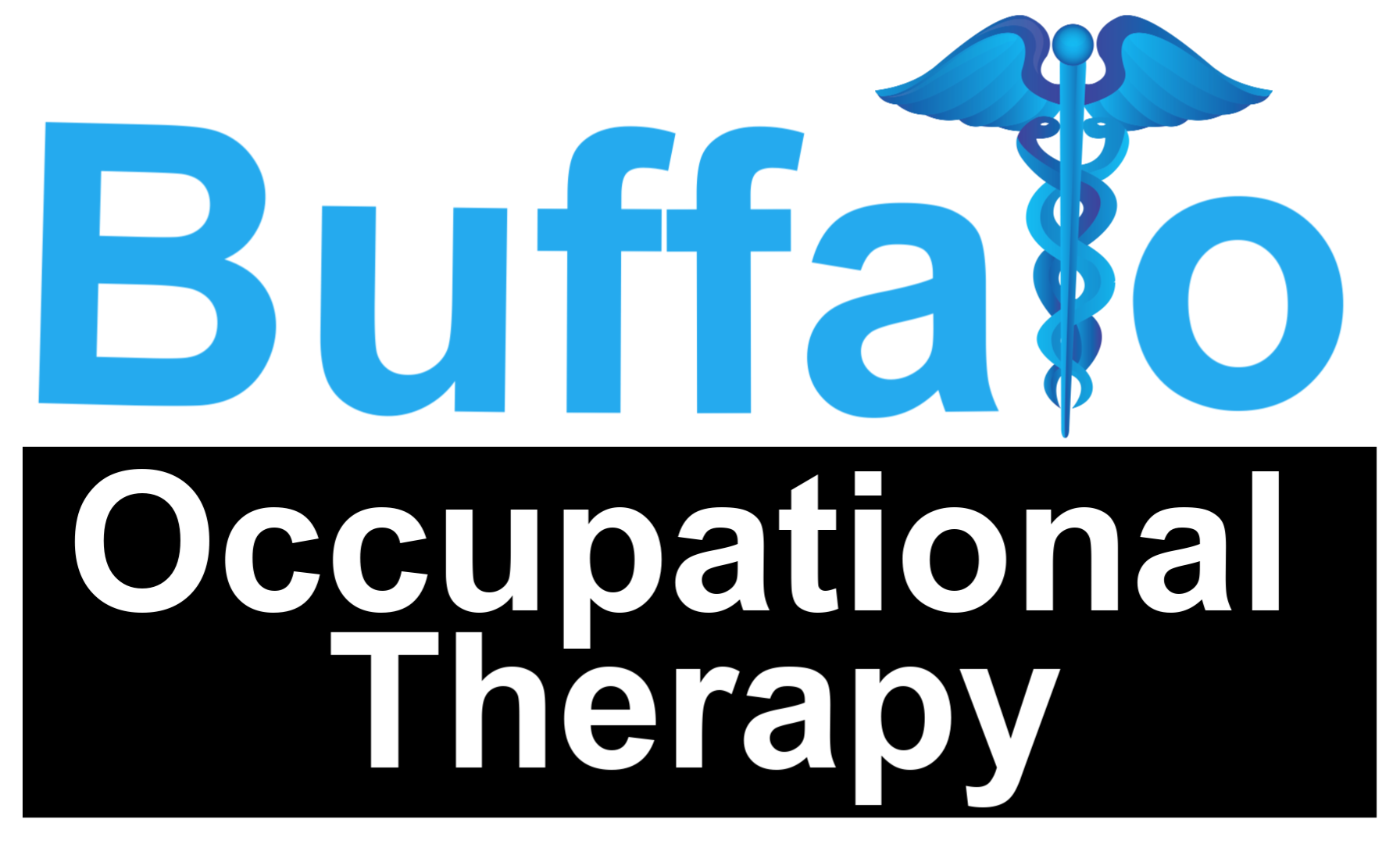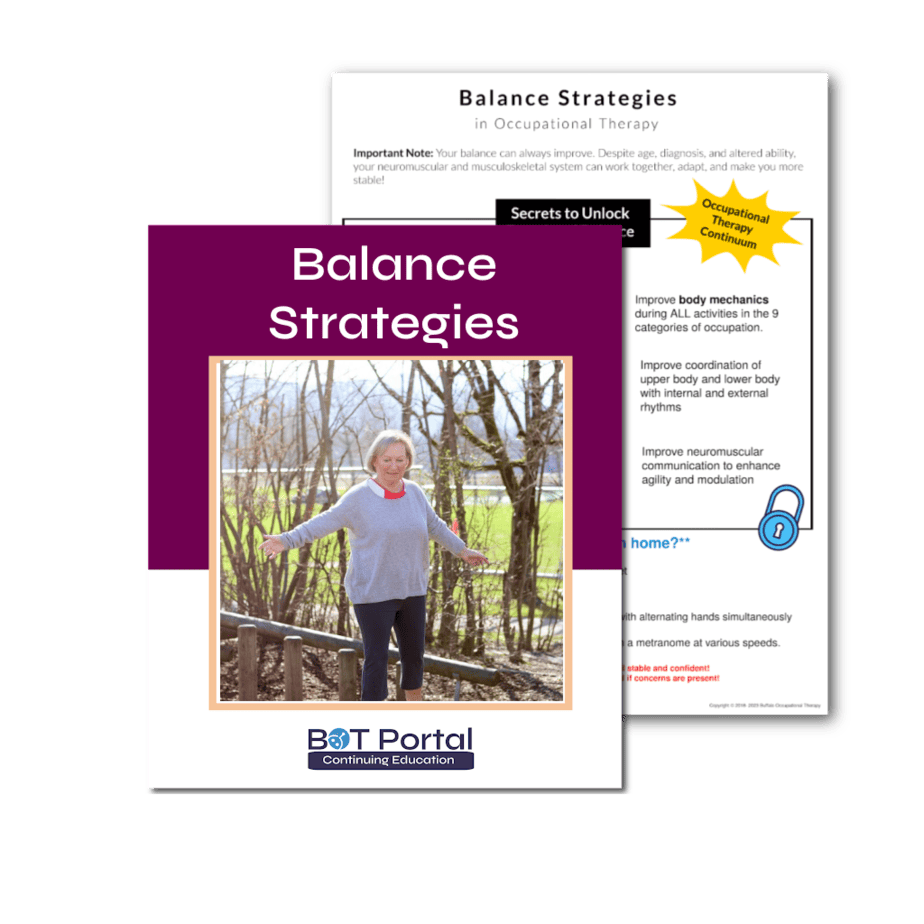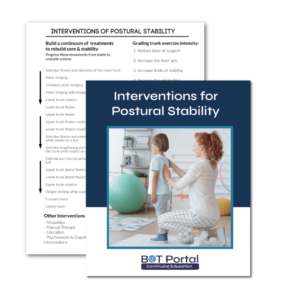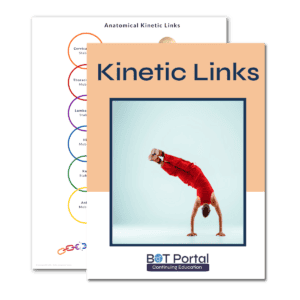Description
Balance Strategies
Note: These balance strategies are ideas to inform daily practice. Many research-supported intervention trajectories are shown to promote remediation, but people are different! This is merely a tool in your toolkit 🙂
Balance plays a significant role in daily activities, influencing stability, coordination, and functional mobility during tasks across various categories of occupation. By understanding the importance of balance and implementing targeted strategies, individuals can improve their ability to maintain stability and engage in activities safely, comfortably, and effectively.
The single-page resource illustrating balance strategies provides a valuable tool for occupational therapy practitioners and their clients. It features a comprehensive list of strategies aimed at enhancing balance across various contexts of occupation. These strategies include developing and maintaining postural alignment, improving proprioceptive joint awareness and body schema, addressing muscle imbalances, optimizing body mechanics, coordinating upper and lower body movements, and enhancing neuromuscular communication.
Occupational therapy emphasizes the importance of these strategies in occupational performance, as poor balance can lead to increased fall risk, decreased independence, and limited participation in daily activities. By providing goals centered on education on balance strategies and facilitating hands-on practice, occupational therapists empower individuals to strengthen their core muscles, improve proprioception, and enhance coordination for tasks such as walking, reaching, and performing self-care activities.
For example, an individual experiencing difficulty with balance during functional activities such as dressing or cooking may benefit from balance strategies such as improving postural alignment, addressing muscle imbalances, and enhancing coordination between the upper and lower body. They can help improve balance, reduce the risk of falls, and increase confidence and independence in daily activities.
enables them to take proactive steps to enhance their musculoskeletal health and functional independence. Through targeted interventions, personalized guidance, and ongoing support, occupational therapy empowers individuals to build balance, reduce the risk of injury, and optimize their overall well-being during daily activities and tasks. By utilizing resources such as the balance strategies checklist, individuals can improve their balance, increase their confidence, and maintain optimal occupational performance throughout their lifespan.
Other helpful links:
Check out BOT Portal: Resource Site for Occupational Therapy Students and Practitioners




